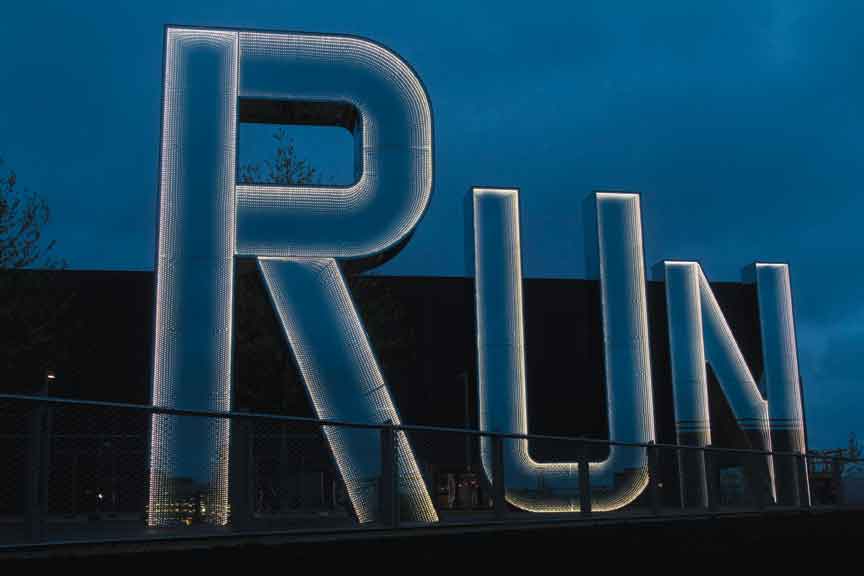« Features
Kettle’s Whistle: Long May You Run
Without questioning the sacrosanct necessity of security measures, especially when it comes to protecting a massive, crowded and potentially vulnerable event such as the Olympics, the recent news of missile batteries installed on rooftops of Bethnal Green and many other neighborhoods surrounding London’s Olympic Park have raised a few eyebrows. Battered by years of fighting with the Irish Republican Army and most recently al-Qaeda, London is understandably sensible to the subject of terrorism, so it is taking no chances. And yet, the idea of having soldiers armed to the teeth and choppers flying around hardly sounds comforting. If anything, an extensive military presence creates tension rather than reassurance. Security, after all, is like special visual effects-it works best when you don’t see it. Given the current circumstances, such a sudden and exuberant display of weaponry seems to be at least partially animated by the same feelings behind the campaign recently posted on the tube about making London cleaner for the Olympics-muscles flexing rather than real substance.
Either way, it didn’t come as a surprise in such a climate that the press trip organized to visit the art in London’s Olympic Park felt like they were touring an army base with sculptures. There were massive security checks, very limited movement options and little possibility of seeing anything without the filter of a bus window. Still, it was interesting to see the Park coming to life for the big event of the summer and noticing the enthusiasm of the guides for features such as the “biggest McDonald’s in the world,” as well as their polite but rather cold presentation of the work of the likes of DJ Simpson, Jeppe Hein, Peter Lewis, Jo Shapcott, Carol Ann Duffy and John Burnside.
If the combination of the aforementioned selected artists seems a bit uneven, it’s because it admittedly is. Giant steps have been taken to promote the pairing of art and sport, a combination that the late Harald Szeemann regarded as “unimaginable if suicidal” until not too long ago, before the city of Berlin had the nerve to organize an exhibition parallel to the World Cup finals. Yet, something at the Olympic Sculpture Park doesn’t quite add up. The first notable absence is the YBA generation, which is currently heavily represented in every public institution in town. Either the venerable London art institutions got there first, or the Olympic Park curators or the artists themselves know better. This could have been turned into a good thing, especially if quality was for once adopted as the discriminating criterion over fame, but what emerges from the sight of Keith Wilson’s Steles or Martin Richman’s Underwhirl does not look like any such thing. A lot of works seem either pedestrian or excessively decorative, and only a few, such as Carsten Nicolai’s Ifo Spectrum, are a genuine attempt to reconcile the idea of sport and environment with the idea of art.
The real masterpiece, however, lies right next to the Copper Box. It is Monica Bonvicini’s totemic sculpture Run, a set of larger-than-life letter blocks made of mirroring surfaces that blend in with the landscape at day and turn to light at dark, solemnly illuminating the area with their succinct but poignant message. Those in the press who previewed the piece by condemning it as simplistic suggests that the old art tune “you have to see it first” is still valid. The beauty of Run lays first and foremost in the possibility to experience it on different levels from different angles. Despite its formal integrity and authority, it’s extremely viewer friendly and interactive. Unexpected perspectival views and visual games surface depending on where you stand, and no doubt crowds of visitors will spend a lot of time waltzing around it in July. As for the message, literal as it might be, it is only there, in the middle of those macroscopic sport structures with racing tracks and ball courts, that it hits. It is indeed simple, and that’s because it’s supposed to be simple. There is something really elemental about it, something intrinsically wonderful with the idea of encouraging athletes from the world over to give it a go with such a short, straight-to-the-point message. Inside the hoopla, the money, the business, the celebrity circus and whatnot that have dominated preparation for the event over the past four years, Run comes across as an awakening, a little flash, a reminder of the primary significance of sport as envisioned by Pierre de Coubertin. Finally, when the green light goes on at the end of July, this is what it will all be about.




































